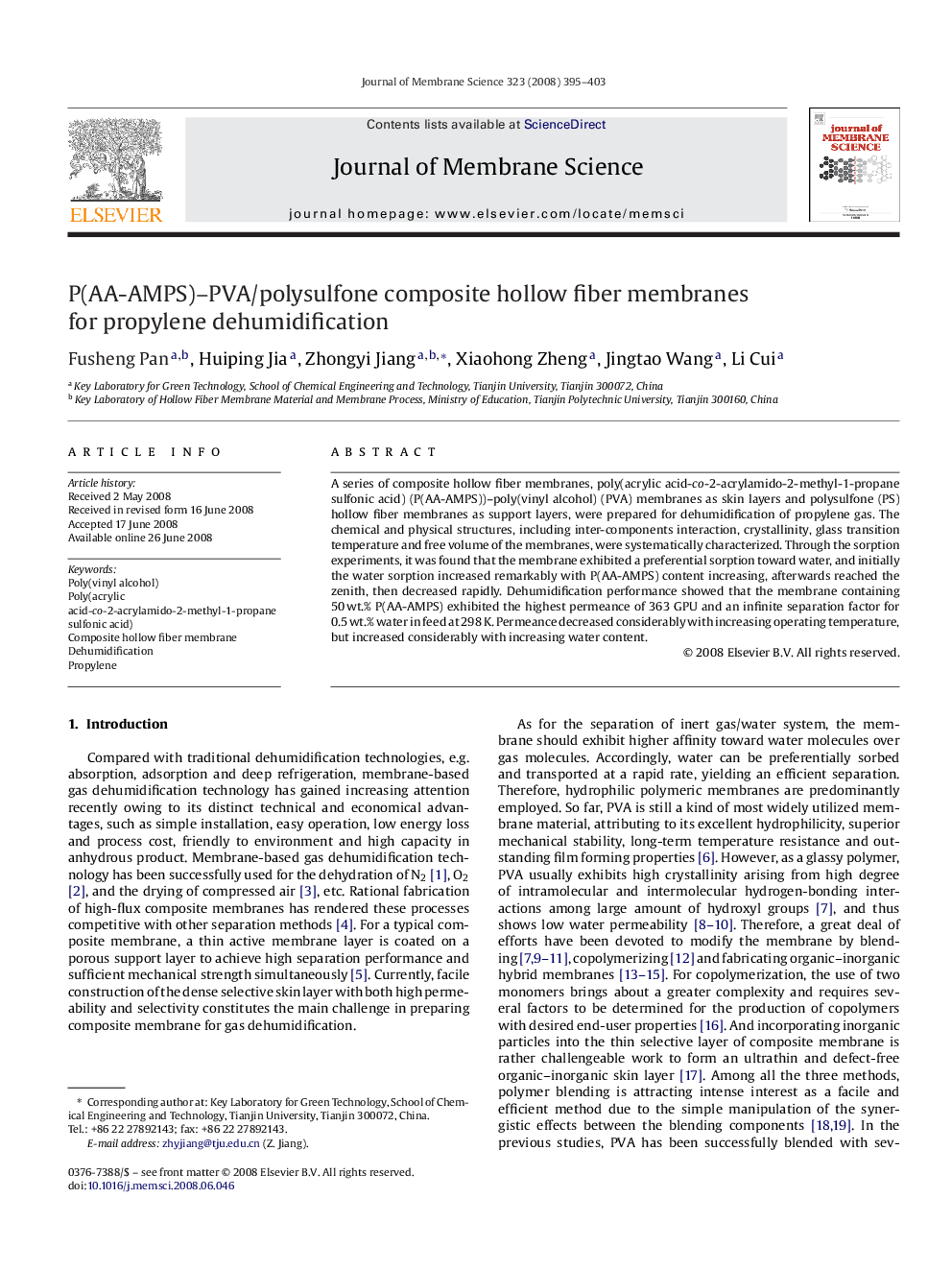| Article ID | Journal | Published Year | Pages | File Type |
|---|---|---|---|---|
| 637690 | Journal of Membrane Science | 2008 | 9 Pages |
A series of composite hollow fiber membranes, poly(acrylic acid-co-2-acrylamido-2-methyl-1-propane sulfonic acid) (P(AA-AMPS))–poly(vinyl alcohol) (PVA) membranes as skin layers and polysulfone (PS) hollow fiber membranes as support layers, were prepared for dehumidification of propylene gas. The chemical and physical structures, including inter-components interaction, crystallinity, glass transition temperature and free volume of the membranes, were systematically characterized. Through the sorption experiments, it was found that the membrane exhibited a preferential sorption toward water, and initially the water sorption increased remarkably with P(AA-AMPS) content increasing, afterwards reached the zenith, then decreased rapidly. Dehumidification performance showed that the membrane containing 50 wt.% P(AA-AMPS) exhibited the highest permeance of 363 GPU and an infinite separation factor for 0.5 wt.% water in feed at 298 K. Permeance decreased considerably with increasing operating temperature, but increased considerably with increasing water content.
